A 5 Steps to Homestead Mindset and Success in Life
Homestead mindset is the most important factor for homesteading success. A Homestead mindset is the way you approach problems and opportunities on your homestead and in your life. My first impression of homesteading, as a teenager was the variety show, “Hee Haw”. When I thought of what life would be like on my own farm, I thought “Gloom, despair, and agony on me.” I kid you not. But in talking to many folks, this is actually their true impression of the homestead lifestyle. Put them in a barn with a pitchfork and they see mountains of sweaty, stinky work. Put an organic gardener in the same barn with a pitchfork and they see black gold and future veggies. Getting the right homestead mindset is everything.
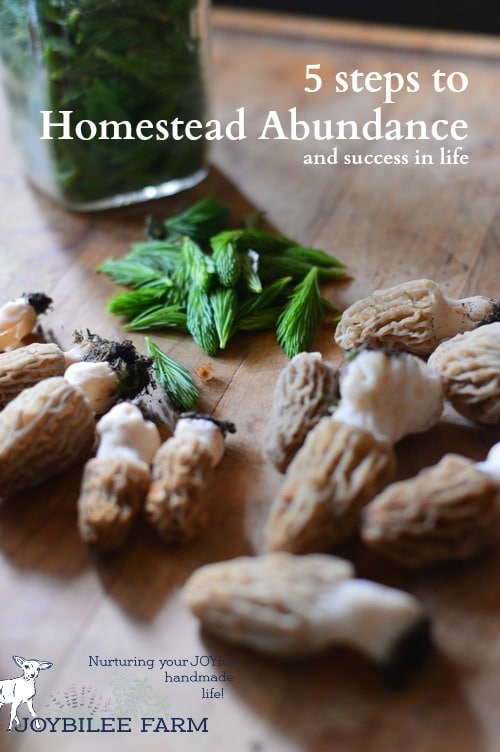
Fast forward from a Sophomore in high school to a BA grad — married and nursing my first child. I discovered Carla Emery’s ” Old Fashioned Recipe Book” (republished as the Encyclopedia of Country Living) and discovered a new way of thinking of homesteading. The first edition of that book was one humongous tome, on newsprint pages and small type. And every page attested to an abundant lifestyle that this city girl had never even thought of. Imagine going out to the hen house to get your eggs — a new one every day or having a visit with a goat and bringing in fresh milk for yogurt, cheese, butter, and drinking milk every day — even on Christmas. No grocery store. Just rich abundance.
As I flipped through the book and looked at recipes for cottage cheese, yogurt, cheddar, ways to deal with tree fruits and berries or even a side of beef, something clicked in my mind. I had a mindset shift. I was growing a homestead mindset.
I opened the front of the book and started dreaming of everything my newly formed family would need on our homestead. We were renting a 2 bedroom apartment at the time and I had never even planted a lettuce seed. I had baked bread and knew how to cook from scratch, sorta. I knew how to can store-bought fruit and how to make jam from store-bought berries.
The Encyclopedia of Country Living, 40th Anniversary Edition
Armed with that book, and the More-With-Less: A World Community Cookbook that I found in a thrift store, I made my first attempt at rendering tallow and making soap from tallow and lye. I was hooked. The year was 1983, my first son was a newborn, and we were making plans to find a homestead and live an abundant life. But I was just beginning to grow a homestead mindset.

My first homestead goals were mapped out in the back and front newsprint pages of the “Old Fashioned Recipe Book”. And our homestead future was sealed right then. Did it matter that we had just entered the worst recession of my young life? That my new husband was laid off from his job when I was 6 months pregnant? That our student loans came in at 25% interest after hyperinflation took hold? We lived on unemployment insurance at $600 a month, and our rent was $350 a month. It never occurred to me that we wouldn’t get our homestead. We paid off our student loans in 3 months, I have no idea how we did it, (but I assure you, we were within the law). It seemed that in spite of the financial circumstances we were never in want and by the time my husband was offered a new job, as a computer programmer for a room-sized HP computer, we had paid off all our debts and moved into a bigger rental, with 3 bedrooms and no yard. We saved for 4 months and made a bid on an acreage, which was turned down. Not even counter-offered. We kept looking, saving, and came back after 2 months to the first place and made another bid — this time for cash. My hubby’s parents gave us the loan, excited that we were finally making a permanent home for our new family. Our cash offer was accepted.

Now 33 years later, we have had times, as full time homesteaders, making a living off our acreage, that the homestead life didn’t feel abundant. When the sales are down at the farmer’s market, or the soap doesn’t set and has to be used as laundry soap, or when the baby goats or lambs chill, weaken, and die, it feels like the homestead life is “gloom, despair, and agony on me.” When the frost comes in the middle of July and the last frost was June 15th, and the potatoes die in the field, and there is no harvest at all, it doesn’t feel like the abundant life. If you’ve been homesteading, gardening, or raising livestock for any length of time, you know what I’m talking about. In those nights of sorrow, and grief, you wonder if you are doing the right thing, raising your family on the homestead. But even on those days, the egg basket is filled and the milk bucket is filled and the garden gives its garlic, lettuce, kale, and mint to anyone who is willing to gather it. The abundance doesn’t stop on the homestead. It doesn’t even take a rest so you can have a good cry and get it over with. And you have a choice — you can define your own mindset. You decide which to focus on — the daily abundance or the seasonal setbacks.
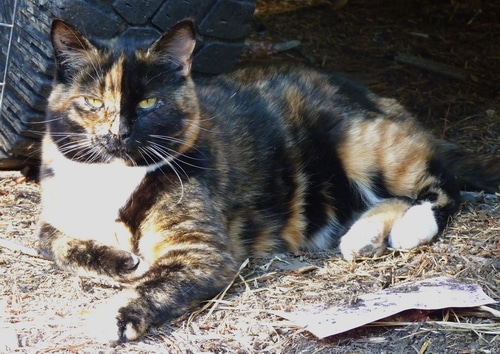
5 Steps to the Homestead Abundance Attitude
I offer you 5 steps to taking hold of your own Homestead Abundance. These are the 5 steps that we have found most helpful in making the mindset shift to embracing abundance with gratitude.
1. Redefine your success
If your success is defined by how much money you bring in every week, and how big your retirement saving account is growing, you won’t find that kind of success on the homestead. Not that it can’t happen, but it’s not the focus. If your success, however, is defined by community, family closeness, food security, your growing inventory of self-reliant skills, and alternative economies, you have a good chance of being successful on the homestead.
This was a hard lesson for me to learn. When we first decided to go full time, quit the day job, sell the city homestead and make the move to our 140 acres and a log house, in rural Canada, our security was in the size of our bank account and the generous retirement income we had gained, through homestead frugality. We were getting gentle nudges suggesting to us that we were trusting in the wrong security. This was a hard lesson and we didn’t learn it overnight. At first when visitors would come to the farm — we would drop everything — totally elated because of the possibility of a sale. We called visitors, “customers” and at first, when the economy was strong, folks would inevitably buy a bar of soap or a hank of yarn at the end of a farm visit. But after the Great Crash of 2008, the sales slowed down, although the visitors didn’t. We stopped referring to visitors as “customers”.
There was a shift in our mindset, and it was an important landmark. We discovered that God was the source of our financial security, not the whim of a customer. We could trust him with our financial needs. He always provided exactly what we needed — winter coats from the free store, garden produce from a friend or garden abundance at the farm. We even had eggs to share with those in need, when we didn’t have customers for them. We didn’t need to worry about whether a visitor was going to buy something when they took up an hour of our time, in the middle of summer, asking homesteading questions. God was the source of our money and our food. Period. End of Story. He never left us helpless or in want. Never. Not once. Even when there was nothing left in the bank, except enough to pay the balance on the credit card or enough to pay for the hay this month, we were never in dire straits.
My success isn’t defined by how much money I made this year. We’ve been homesteading full time, making our living entirely from our homestead for 8 years now, supplementing with some off farm part time work, since 2009. In November 2012 Mr. Joybilee was offered a full time job as Chief Administrative Officer (CAO) of the city close to our farm. It’s a position where he believed he could make a difference for our community. He was free to consider other factors in his decision to take the job, besides income, because he has a mindset shift, knowing our support doesn’t come from a job. After 8 years of full time, homestead living, we have no debt. No credit card balance. No unpaid bills. And we still have our retirement savings. Our daughter is in her junior year of university, without student loans. We’ve lived on less monthly income than a welfare mom, yet we’ve lacked for nothing. Sometimes I felt sorry for us, and downright poor when I focused on the money. But when I focused on the homestead abundance I found great wealth. It’s all in the gratitude mindset. The homestead life is a rich life.
2016 Update: The off farm job was a 2 1/2 year term. Just long enough to help get through the University bills. Sarah graduated with her BSc. with honours and without debt. We were able to hire her to do some work on the farm because of Mr. Joybilee’s full time income, as well as help her start her own business so that she could be financially independent. Mr. Joybilee’s been back on the homestead full time since mid2015. And after interviewing for other positions which would mean leaving the land, we’ve decided this is where we need to be. He’s pursuing online work.

2. Open up your heart
The homestead life can be a lot of hard work. Up early in the morning, staying up late at night. When that hard work doesn’t equate to money in the bank, it can be difficult to keep the perspective. Taking a walk together as a family, as often as possible, has helped us make the shift. The homestead projects never end. The work is constant and the to-do list seems to get longer instead of shorter. Taking a daily mini-vacation to feel grateful for the sunshine, the expanse of land, and the family togetherness, helps to keep our hearts open to each other and to remind us of the homestead abundance.
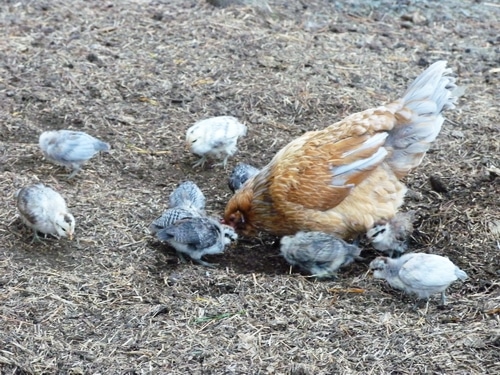
3. Set the alarm
It’s tempting when you work for yourself to sleep in and get moving slowly in the morning. But when you do that, you always feel like you are running to catch up. The animals thrive on routine, and when you sleep in, you upset their natural rhythms. When they are upset they don’t co-operate. And when they don’t co-operate everything takes longer. Do yourself a favour, set the alarm, get up and plan your day with God and then start your work. You will get more done and be happier if you get up at the same time every day.
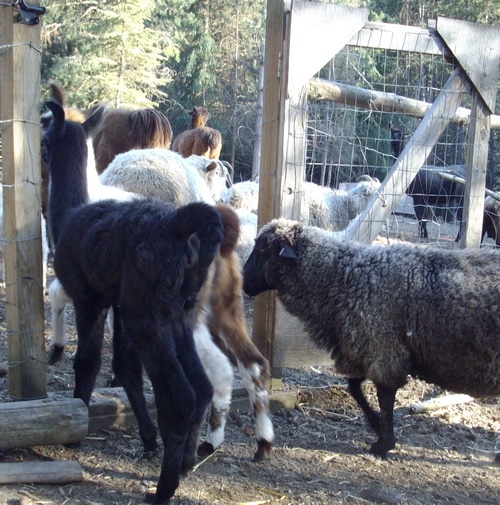
Bedtime in the barnyard
4. Lock the animals up at night
Most predators attack at night, or early in the morning before the farmer is up. Losing animals to predators can be minimized by locking your animals inside a barn or shed at night and letting them out in the morning into a loafing yard in winter, or grazing your acreage in summer. When you lose animals to predators, there is an interruption in the natural abundance, so plan your homestead to accommodate nighttime safety.
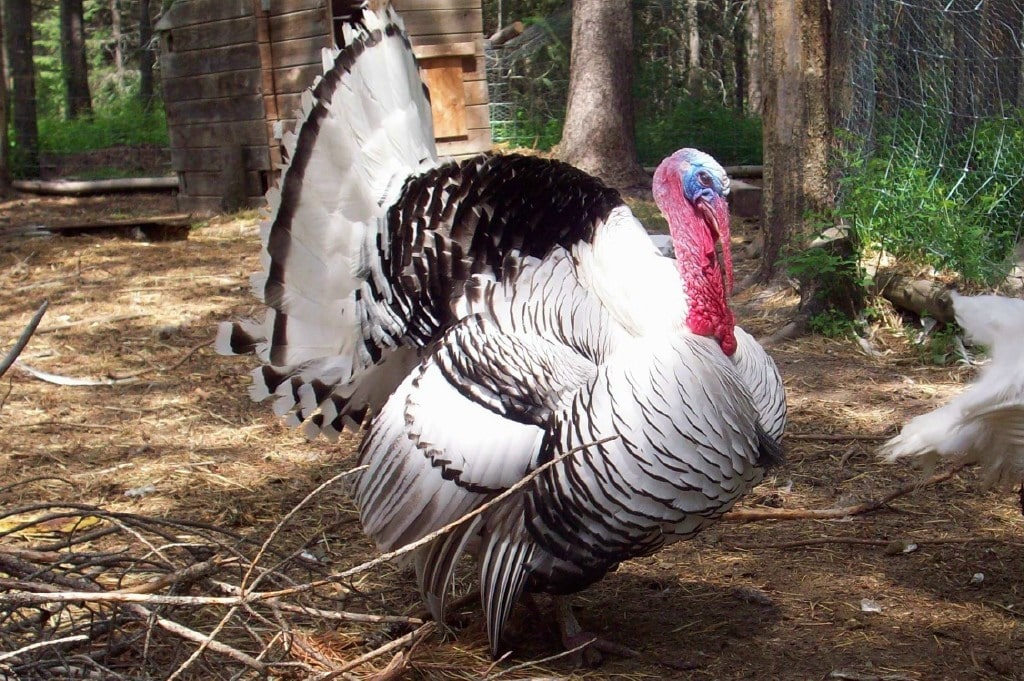
“Royal” our pet Turkey.
5. Count your blessings
There will be seasons of loss and daily abundance on your homestead. It’s tempting to overlook the daily manna and focus on the crop losses, or major catastrophes as they are so devastating to a smallholding, and seem to scream louder. But focus on the daily abundance — the egg basket, the garden veggies, the milk pail (Cheddar cheese, feta cheese, mozzarella, butter, yogurt, buttermilk) and you will find the mindset shift, so necessary for homestead success.
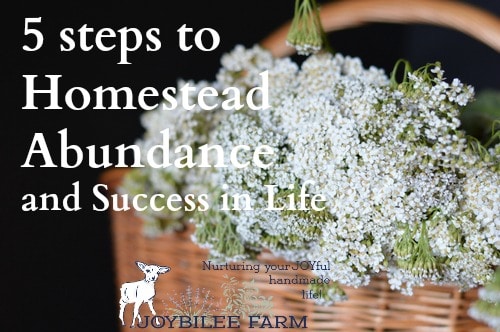
Your Turn:
What daily abundance did you find today? Has your mindset shifted to the homestead mindset, so necessary for success?



It was so good to read this. I’m always torn by the pros and cons of home-farming. It’s sustainable, local and has a certain romance but I’ve never persisted properly with gardening.
As a teenager we lived in a tied house with nearly an acre of derelict garden. Although it ended up in better shape none of us really used its potential. I was too busy with exams and depressed. The rest of my family had other problems.
My love of knitting led me to you a month ago. Recent experiments with a fresh road kill hare which I found when cycling produced tasty dinners and a new hat. But overall I’m probably too indoors-and-crafty for the outdoors-gardening-and-labouring needed. I’m on my own too.
So I’m unlikely to take up the lifestyle of the Ettrick Shepherd and other relatives.
LH, Galashiels, Scotland
loved your newsletter, it’s my first. have always loved the homesteading dream. i live it as much as i can. still praying my husband will dream it as much as i do! thanks for sharing <3 kari
I’m glad you enjoyed it, Kari. Thanks for leaving a comment.
Chris
I really appreciate this post. I have been trying to do something with my tiny ‘homestead’ while working full time. I recently lost my job and now I am home with my granddaughter. I only have 3/2 of an acre in the city. My mindset has never been on the $$$. I am happy with my chickens and rabbits, my garden and fruit trees. I had been trying to start an aquaponics project, and I never had the time to devote to it until now. Watching an excited 4 year old collect a still warm egg is worth more to me than that paycheck ever was. Maybe we don’t really have abundance yet, but it feels like it, lol!
An acre in the city is how we started, Deborah. And even in the city there was abundance — the daily egg, the weeds you can eat, the joy in being able to have control of your food. You are so blessed to have some land. So many folks want what you have! I hear their stories every single day. Thanks for sharing.
Chris